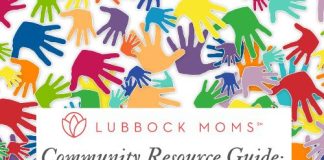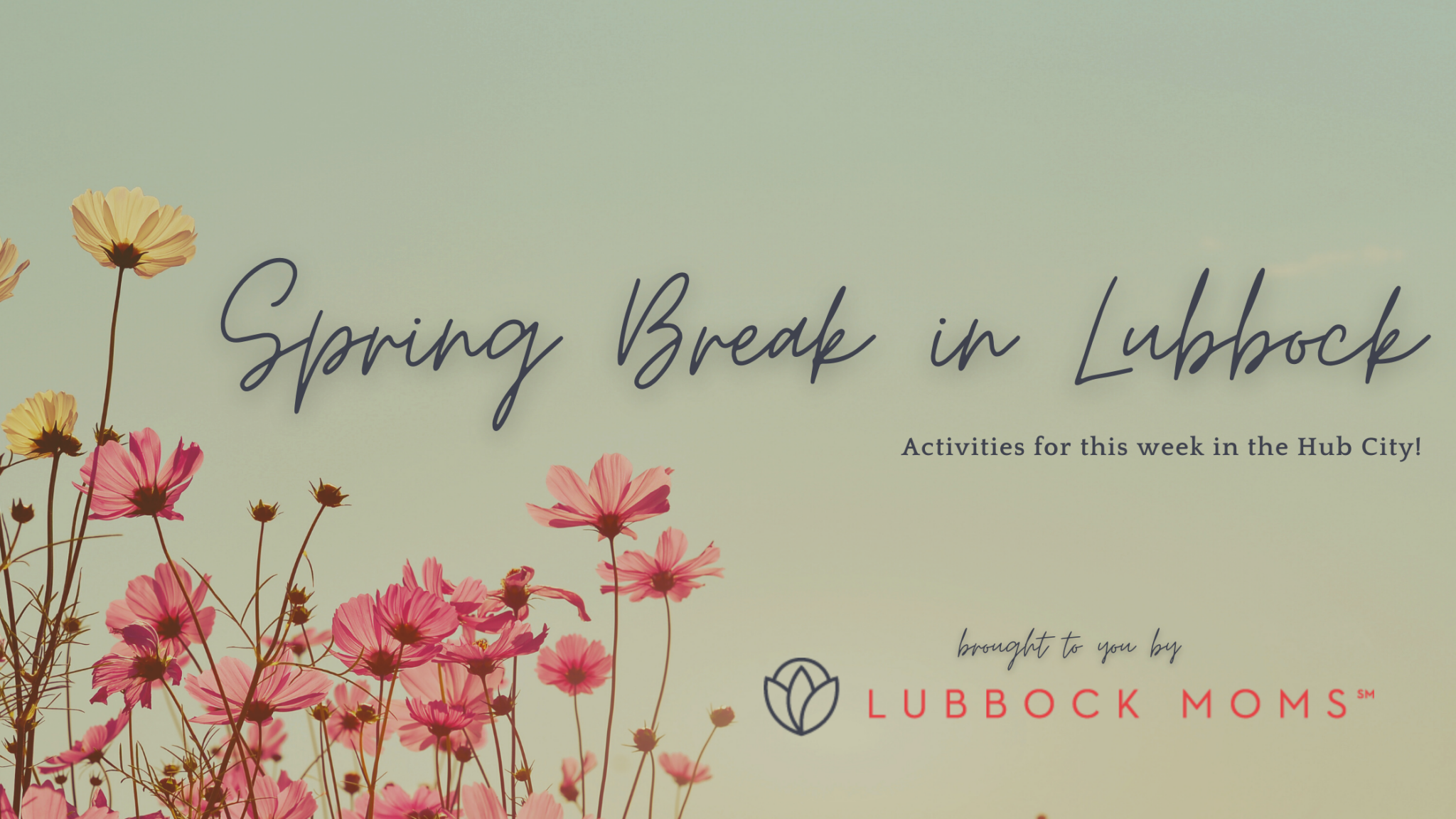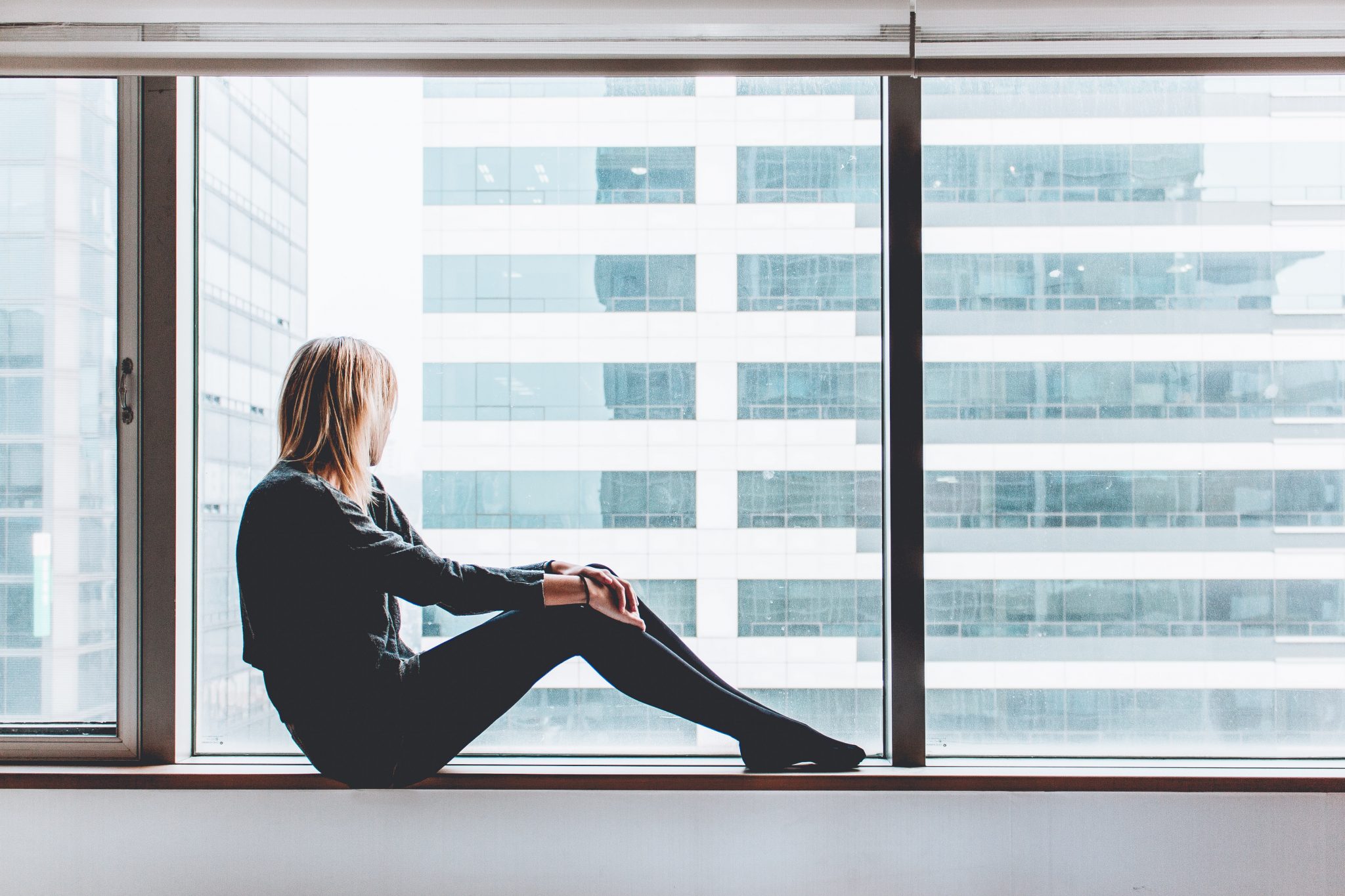
In March of 2020, we were all plunged into a sudden quarantine due to the coronavirus SARS-CoV-2 and the resulting COVID-19 virus. We were told at first, just 10 days to “flatten the curve.” But then 10 days turned into 30, which turned into a year. So here we are now, June 2021, roughly 15 months later, and life is beginning to go back to “normal,” whatever that may mean for our future. I have realized, though, that we as people are having a tough time recovering from COVID.
And no, I don’t mean those who tested positive for the virus (although recovery from that varies greatly from person to person). I’m talking about the fact that we spent the better part of 15 months at home. Workforces that always reported to the office were suddenly expected to set up shop at their kitchen tables. Kids who were let out of school for spring break have been slowly but surely expected to return to an in-person school schedule. Social groups who used to meet for sports or games or anything else have been suspended for over a year.
Let’s talk about me, for example.
I live approximately 35 miles from Lubbock with my husband and two teenage daughters. Before the pandemic and ensuing quarantine, it was common for me to make that drive at least once weekly, if not 2-3 times. I would hop right over to Lubbock to buy groceries or run errands or meet a friend for dinner. But now, you mean I have to put on something besides yoga pants & house shoes? Do you mean I have to interact with other adults? I might have to strike up small talk with someone new?
The anxiety is on a whole new level for me.
I am anxious about everything in life, in a way that I have never been before. I am not one who was ever overly concerned with the virus, but the simple acts of getting dressed, fixing my hair, and putting on makeup now tend to leave me with cold sweats and nerves so bad that I decide not to attend whatever the function may be. My increased anxiety has caused a new chronic illness for me, Rumination Syndrome.
Stepping out of my comfort zone has become an exhausting task for me. I am always glad when I put on “real” clothes and go out, but it is often too overwhelming to do so.
Now, let’s talk about the U.S. population.
The US Census Bureau teamed up with the National Center for Health Statistics to monitor quickly changing mental health issues. Together, they created the Household Pulse Survey.1 This survey has been conducted in three phases, with a fourth phase occurring now, over various time periods. They compared information gathered in these phases of this survey to the National Health Interview Survey from 2019.2 Here are a few highlights of their conclusions, with the data interpreted by the Kaiser Family Foundation (KFF).
“During the pandemic, about 4 in 10 adults in the U.S. have reported symptoms of anxiety or depressive disorder, a share that has been largely consistent, up from one in ten adults who reported these symptoms from January to June 2019 (Figure 1).”3
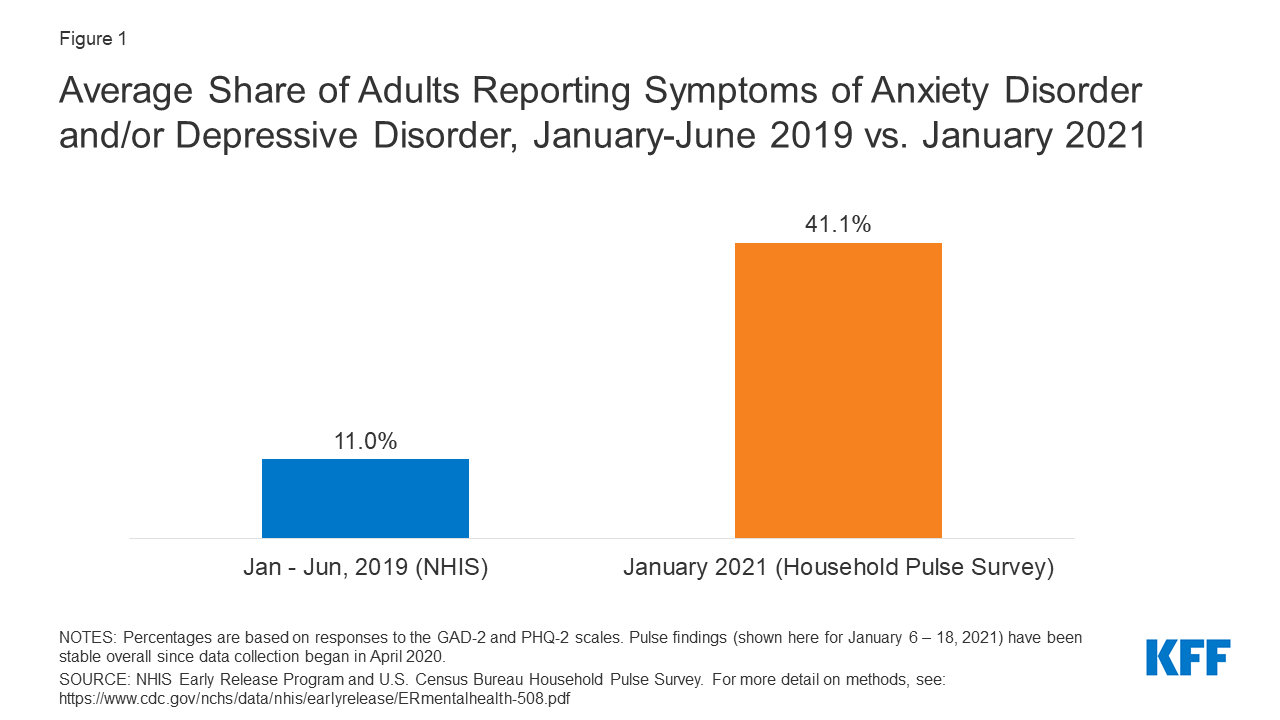
“During the COVID-19 pandemic, concerns about mental health and substance use have grown, including concerns about suicidal ideation. In January 2021, 41% of adults reported symptoms of anxiety and/or depressive disorder (Figure 2), a share that has been largely stable since spring 2020.”3
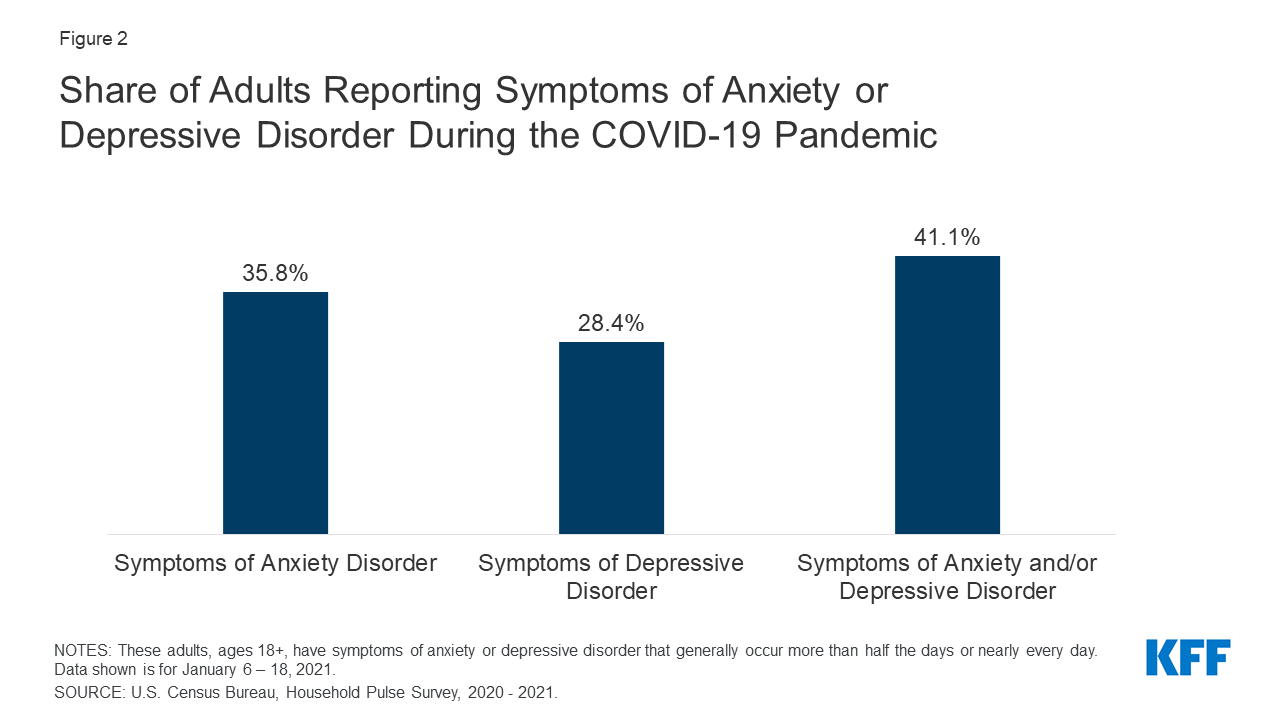
“KFF analysis of the Household Pulse Survey finds that throughout the pandemic, a large share of young adults (ages 18-24) have reported symptoms of anxiety and/or depressive disorder – 56% as of December 2020 – compared to older adults (Figure 3).”3
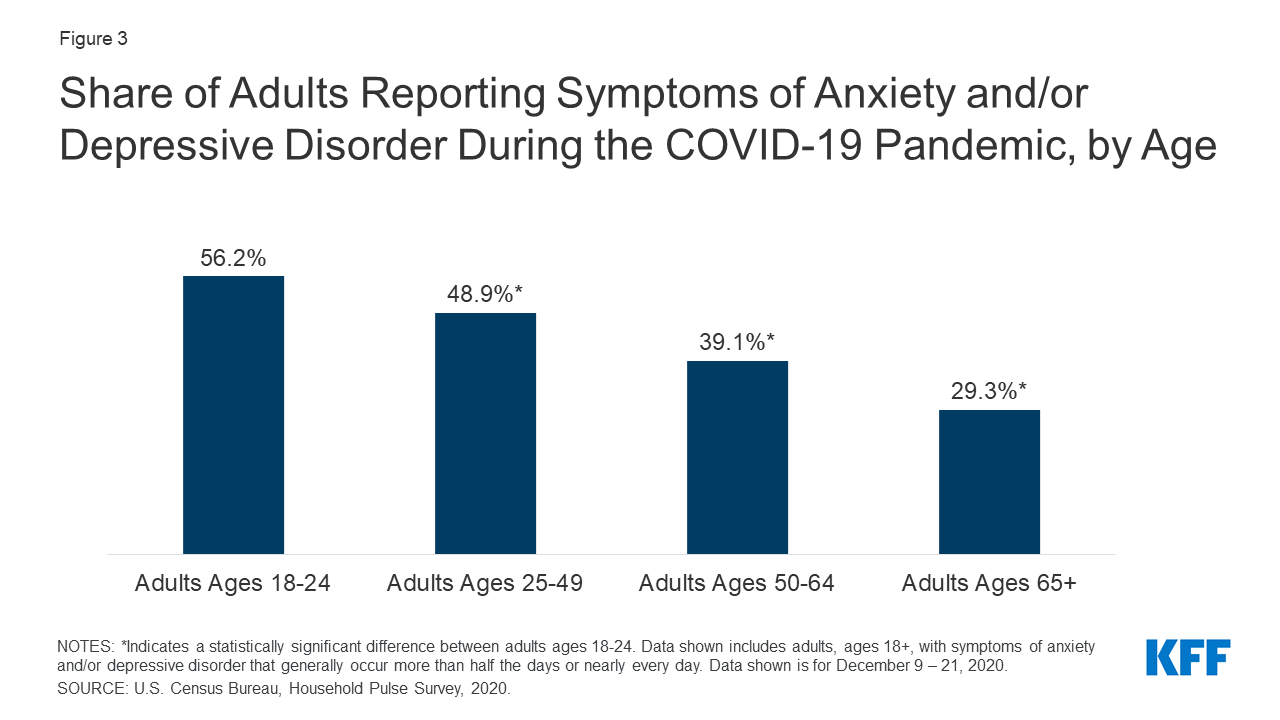
“Adults experiencing household job loss during the pandemic have consistently reported higher rates of symptoms of anxiety and/or depressive disorder compared to adults not experiencing household job loss (53% vs. 32%, respectively; Figure 4).”3
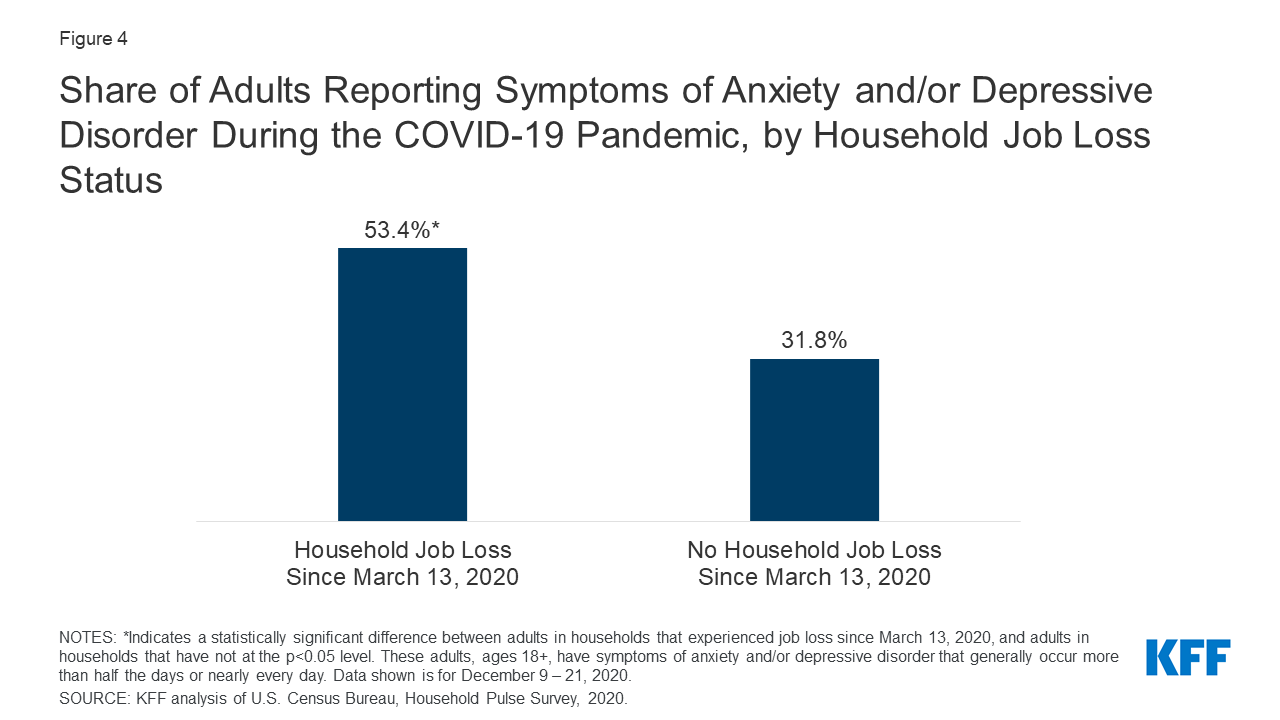
“Throughout the pandemic, we find that adults in households with children under the age of 18, compared to adults in households without, are slightly more likely to report symptoms of anxiety and/or depressive disorder (45% vs. 41%, respectively, as of December 2020). Specifically, among households with children under the age of 18, women have been more likely than men to report symptoms of anxiety and/or depressive disorder throughout the pandemic (as of December 2020, 49% vs. 40%, respectively; Figure 6).”3
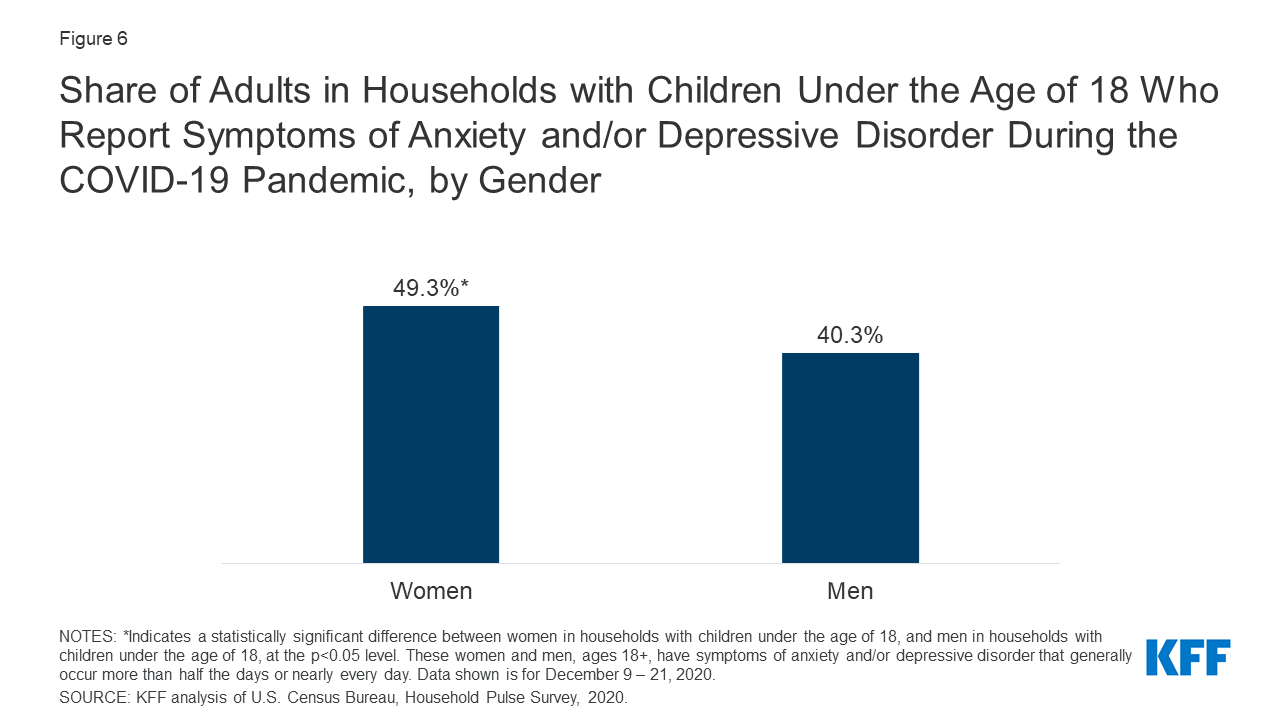
“The pandemic’s mental health impact has been pronounced among the communities of color also experiencing disproportionately high rates of COVID-19 cases and deaths. Black and Hispanic adults have been more likely than White adults to report symptoms of anxiety and/or depressive disorder during the pandemic (Figure 7).”3
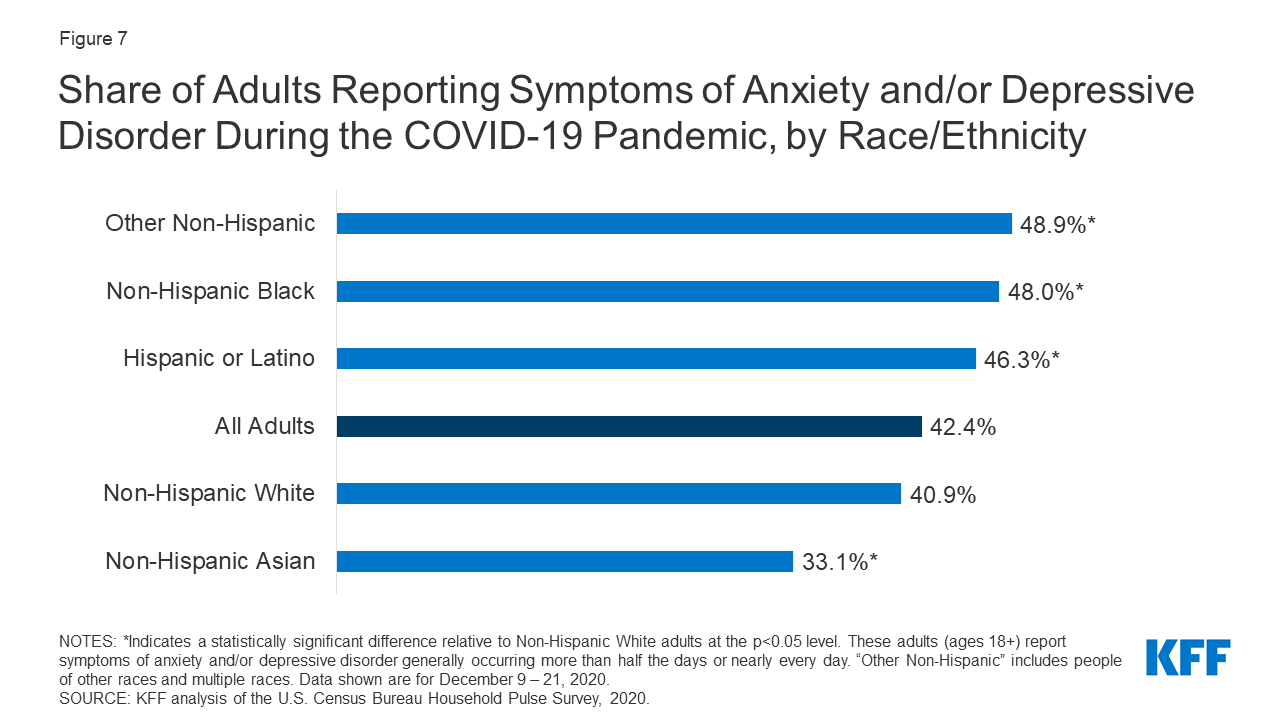
So, with all this information, how do we recover?
I truly wish I had the answer to this question. I genuinely do not know where we go from here as a society to recover from a year of social isolation. I know for me personally, all I can do is get up, get dressed, and show up. And sometimes, I only get up. Sometimes, I manage to get dressed. Rarely, I show up. But those days when I succeed at all three things, those days lead to more days like them. Those days are always worth it once I’m there. Some days, though, are just harder to get there than others. Whatever you’re doing to survive and recover from COVID, tell yourself that you are doing enough. YOU are enough.
Check on your friends and family. Be their cheerleader. Be their shoulder to cry on. If it is a day that you can show up, show up. If it is a day you need some help, please don’t be afraid to ask for it. We may all be in different boats, but we are in the same storm.
- Measuring Household Experiences During the Coronavirus Pandemic: https://www.census.gov/data/experimental-data-products/household-pulse-survey.html
- National Health Interview Survey 2019: https://www.cdc.gov/nchs/data/nhis/mental-health-monthly-508.pdf
- The Implications of COVID-19 for Mental Health and Substance Use: https://www.kff.org/coronavirus-covid-19/issue-brief/the-implications-of-covid-19-for-mental-health-and-substance-use/






